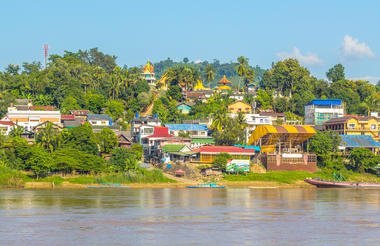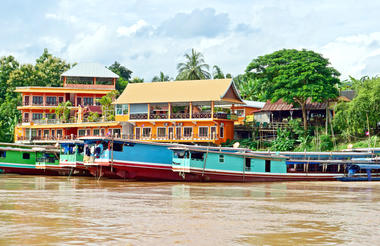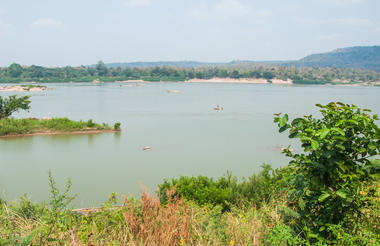Uganda, or the ‘Pearl of Africa’, as it was famously dubbed by Winston Churchill, is characterised by relatively dry and flat savanna in the north, with verdant mountains in the West, and vast dense and remarkably lush forests in the central region. The nation is home to an astonishingly diverse range of African wildlife including the highly endangered mountain gorilla which can be found in the Bwindi Impenetrable Forest. A popular spot for wildlife watching is Queen Elizabeth National Park, which hosts four of the Big Five, a flock of flamboyant flamingos and the rare tree-climbing lions of Ishasha. Outdoor enthusiasts can get their adrenaline fix with plenty of whitewater rafting, kayaking, hiking, quad biking and horse riding facilities on offer. Add to this some friendly locals, a burgeoning cultural scene, and a capital city full of lively bars, clubs and restaurants, and it is easy to see why Uganda has gained itself a reputation as 'Africa's friendliest country'.
Located in southwestern Uganda, the Bwindi Impenetrable National Park is said to be Africa’s oldest rainforest. It is world-renowned for its excellent gorilla-sighting opportunities - the forest is home to half of the remaining mountain gorillas on earth. This gorilla experience takes place among a rugged landscape of dense jungle, cascading waterfalls, sparkling mountain streams, deep valleys, and steep ridges. The untouched forest has been declared a UNESCO World Heritage Site for its breathtaking natural beauty and unique ecological significance. Aside from the amazing gorilla interactions, there are other drawcards such as a network of forest walks, over 340 species of bird to spot, and a variety of brightly-coloured butterflies to identify.



With 18,110 islands, 6,000 of them inhabited, Indonesia is the largest archipelago in the world offering a virtually unrivalled range of holiday options. While the picturesque island of Bali remains the most well known and the most popular of Indonesia’s tourist destinations, there is so much more on offer for those willing to step off the beaten track. Pack your itinerary with visits to: the historic monuments and temples of Central Java; the world renowned dive sites of idyllically remote Raja Ampat; the extraordinary Island of Komodo, home of the unfathomably large Komodo Dragon; as well as a range of vast tropical forests providing sanctuary to incredibly diverse wildlife from Orangutans and other primates to critically endangered Javan Rhinoceros and Tigers. The range of choices is mind-boggling but, however you decide to spend your time on this remarkable group of islands, you are sure to have some truly exhilarating experiences and some unforgettable adventures.
As its name suggests, North Sumatra is a province in the north of Indonesia's Sumatra Island and is one of Indonesia's most frequently visited provinces. It is known for its lush virgin rainforest, spectacular waterfalls, volcanic lakes, pristine white sand beaches and the fascinating culture of its local Batak people. Here, travellers can marvel at the towering volcanoes of Berastagi, visit the popular orangutan sanctuary in the village of Bukit Lawang, swim in the volcanically warmed waters of Lake Toba, surf the massive waves of the uninhabited Banyaks islands, and explore the underwater wonderland off the coast of Weh Island. The entire province is centred around the massive provincial capital of Medan, which serves as an excellent gateway for the many natural wonders that this exceptionally beautiful province has to offer.
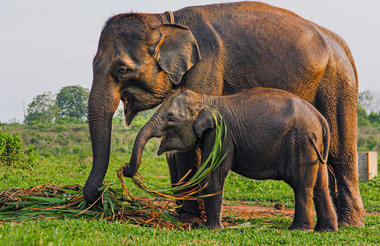

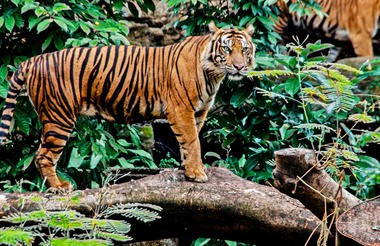
Wedged between a number of larger neighbouring countries, Laos is often overlooked in favour of tourism giants such as Thailand and Vietnam. But these travellers are missing out on an extraordinarily scenic and culturally rich destination. Laos boasts a reputation as the least visited, least Westernised, and most untouched of all Indochinese nations. Only time will tell how long this will last, but while it does, visitors who choose to explore this nation’s remote areas will be richly rewarded. Laos’ primary drawcard is undoubtedly the mighty Mekong River which traverses the length of the country and is considered the second most biodiverse river in the world. In the north, the landscape is characterised by little-explored jungle-clad mountainous areas where visitors can witness the intriguing cultures of the various hill tribes that populate this region. Travellers on the hunt for cultural interest should head for the bustling capital of Vientiane, with its innumerable temples and Buddhist monuments. It is this variety of exotic wildlife, remote wilderness and remarkable cultural treasures that make Laos a truly unique and unforgettable holiday destination.
Ban Houayxay - also Huay Xai or Houeisay - lies on Laos’ northeastern border with Thailand. Although many simply use the city as a transit point, those who linger longer in Houayxay will be richly rewarded by its collection of sights and attractions. Foremost of these are the bustling Muang Keo (Morning) Market in the suburb of Ban Muang Keo and the evocative ruins of the French-colonial Fort Carnot. Nature lovers will relish trips to the nearby Bokeo Nature Reserve, which can only be accessed through The Gibbon Experience, a conservation project run by Societe Animo, and those looking to get a taste of traditional Lao life and culture can get involved in programmes and projects at Daauw Village, where all volunteer efforts and proceeds contribute to the upliftment of the local community.
